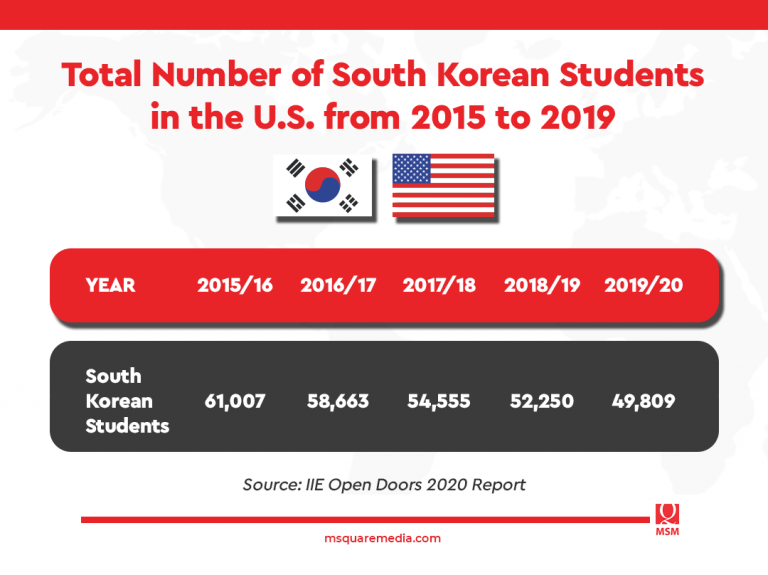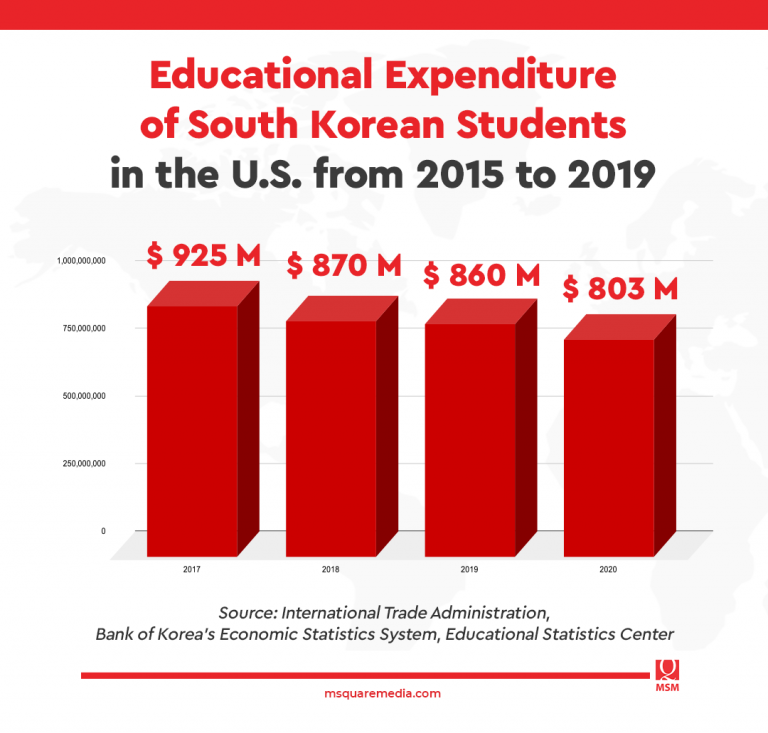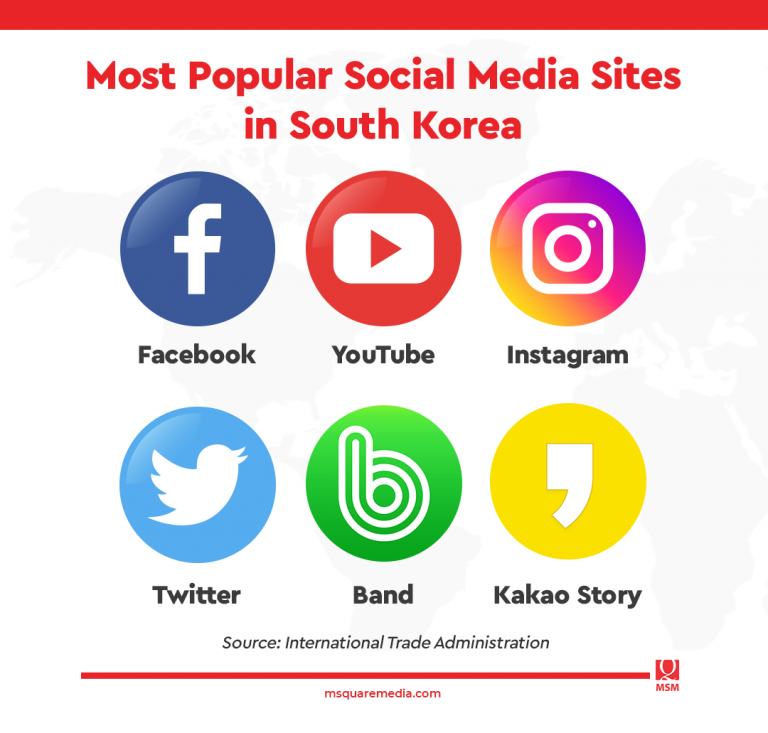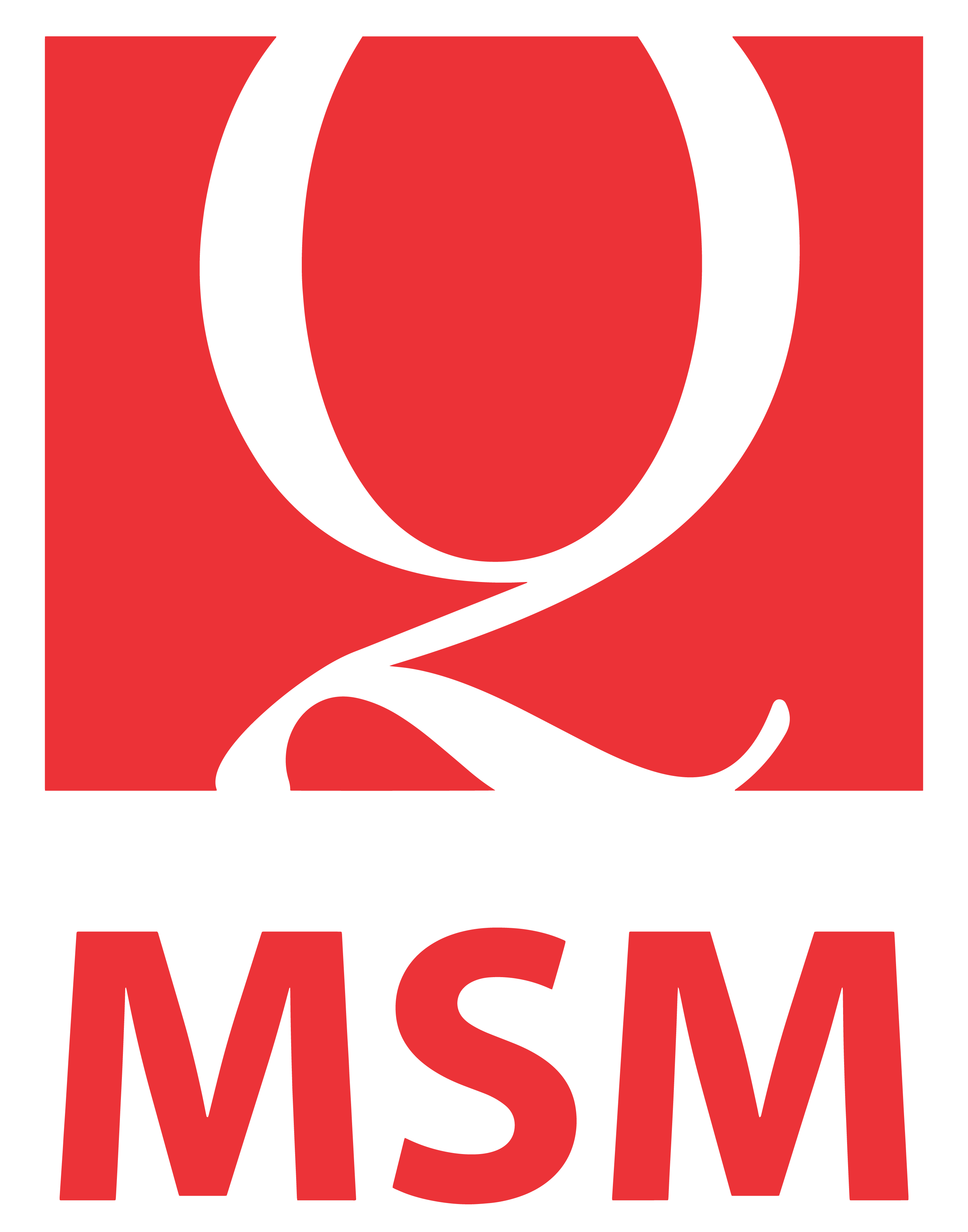The competition to attract Korean students in America is getting tighter. According to an IIE Open Doors Report highlighted by the United States International Trade Administration, the number of Korean students studying in America has slightly dropped in the last five years.
Key Points at a Glance
- In 2015, there were 61,007 Korean students in the U.S. This number dropped to 49,809 in 2019.
- In 2015, annual tuition in the U.S. reached $24,914. It is much more affordable for Korean students to study in China which offers tuition at $3,844.
- Studying English in an “English-learning environment” is still considered a premium study experience for Koreans.
- American higher education institutions should re-purpose their international student recruitment strategies to include a stronger digital marketing presence, among others.
- Since South Korea is one of the top digitally connected countries in the world, EdTech and pathway programs may be strong points.
In 2015, there were 61,007 Korean students in the U.S. In 2019, this number dropped to 49,809. For comparison, the latest count for the total of Koreans studying abroad is at 101,774, according to UNESCO.

This decrease has been attributed to several factors like the rise of quality international schools in Korea attracting potential international students and the challenges of navigating through a weakening economic market.
In 2015, the U.S. was considered as the top country which offers the highest annual tuition for international students at $24,914. When Koreans take financial decisions into serious consideration, China becomes an absolute competitor offering its annual tuition for international students only at $3,844.
Because of all these factors, Korean students have become savvy with their education strategies and investments, and one way they are doing this is by tapping into the advantage of pathway programs. Some Korean students study locally first before transferring to higher education institutions abroad.
How the U.S. Is Affected
According to the actual number of students, China and India are powerhouse sources for international students. However, on a per capita basis, Korea ranks second in sending students to the U.S. from Asia.
Learning English has been considered an important part of the Korean international study experience, but recently study centers nearer to South Korea have offered similar learning opportunities at a lower cost. That said, most Korean families still prefer an “immersion in an English-language speaking environment,” stated the International Trade Administration.
In the context of globalization, Korean students are also an attractive group due to their diversity as seen in their choices for their fields of study: 25 percent seek STEM majors, 14 percent study engineering, 13 percent are in business management, 12 percent study fine and applied arts, and 11 percent study social studies.
Regarding economic contributions, South Korea is the third largest source of international students matriculating at U.S. universities, consisting of 4.6 percent of total foreign students in the U.S. Korean students in the country spent about 803 million in 2020 in educational expenditure, which is a 57 million drop from the 860 million expenditure in 2019.

U.S. Institutions Strategize
According to the International Trade Administration, traditional means of international student recruitment in South Korea–like holding trade fairs or promoting the presence of education recruitment agents in the area–have become far less effective than these were in the past.
“U.S. education institutions should take an approach based on a more permanent, consistent, and profound commitment to the market,” stated the agency.
Instead, initiatives focused on alumni networking, building business relationships, and a strong online presence that contributes to an institution’s core branding message are preferred strategies. The last item is especially an intriguing opportunity, as 92 percent of South Koreans are online due to the high availability of high-speed internet.

Since students have the highest internet consumption rate as compared to other groups in South Korea, higher education institutions in the U.S. should consider a solid digital marketing plan to reach out to potential students.
In the context of technology, pathway programs should also provide higher education institutions with multiple opportunities. South Korea is considered among the world’s top digitally connected countries. Policymakers in the U.S. and South Korea may find common ground when it comes to forming EdTech initiatives which push for reform in their respective education systems.
While it may be difficult to gauge a response in a post-COVID environment, higher education institutions in the U.S. have the time to make adjustments ensuring Koreans continue to pursue further studies in America.

SUNEETHA QURESHI
President, MSM
Data sources:
Travel photo created by benzoix. Freepik. Retrieved from www.freepik.com
South Korea – Country Commercial Guide (2021, January 15). International Trade Administration. Retrieved from https://www.trade.gov/knowledge-product/korea-education-services
McCarthy, N. (2015, July 28) Where Foreign Students Face The Highest University Fees. Statista. Retrieved from https://www.statista.com/chart/3673/where-foreign-students-face-the-highest-university-fees/
Duffin, E. (2020, November 23) Number of international students studying in the United States in 2019/20, by country of origin. Statista. Retrieved from https://www.statista.com/statistics/233880/international-students-in-the-us-by-country-of-origin/
Jobst, N. (2021, July 13) Internet usage in South Korea – Statistics & Facts. Statista. Retrieved from https://www.statista.com/topics/2230/internet-usage-in-south-korea/

